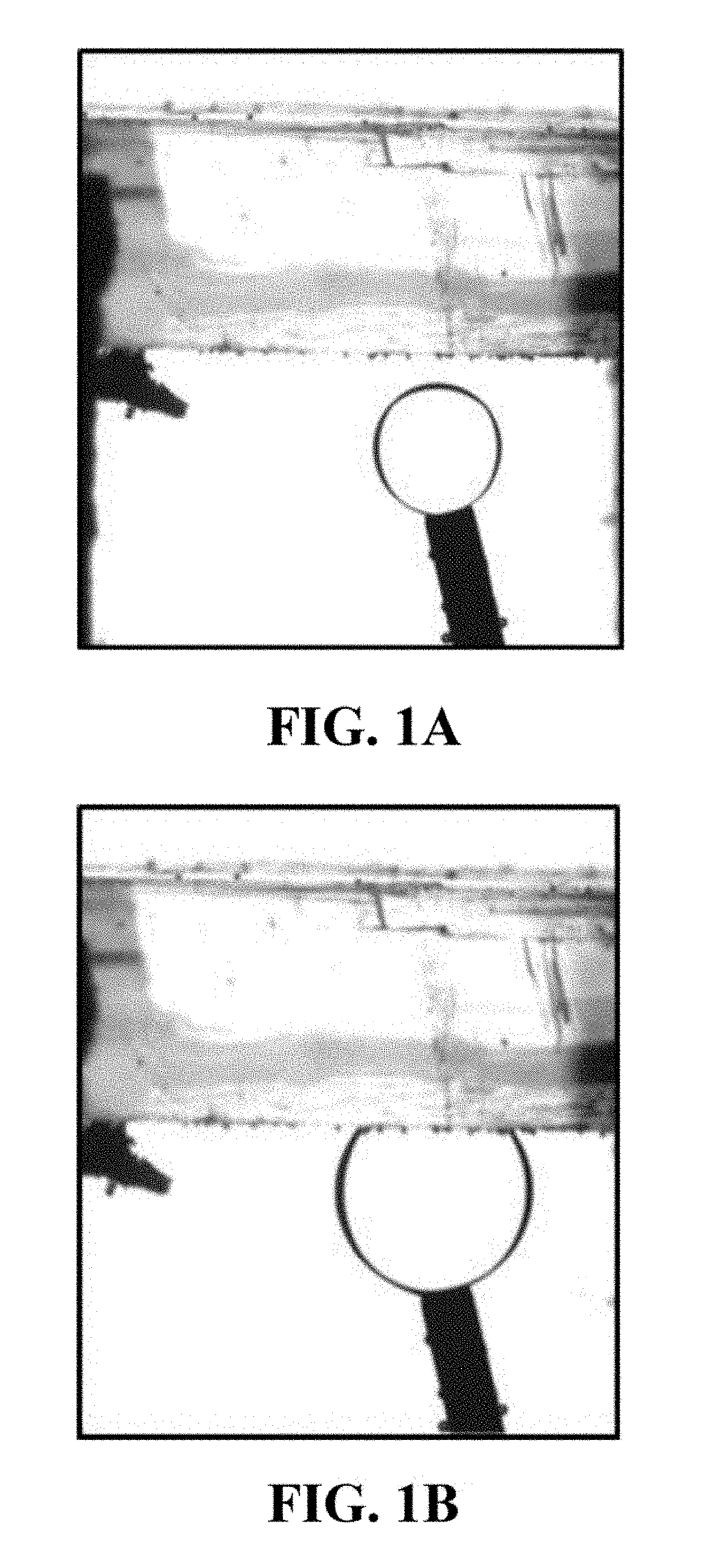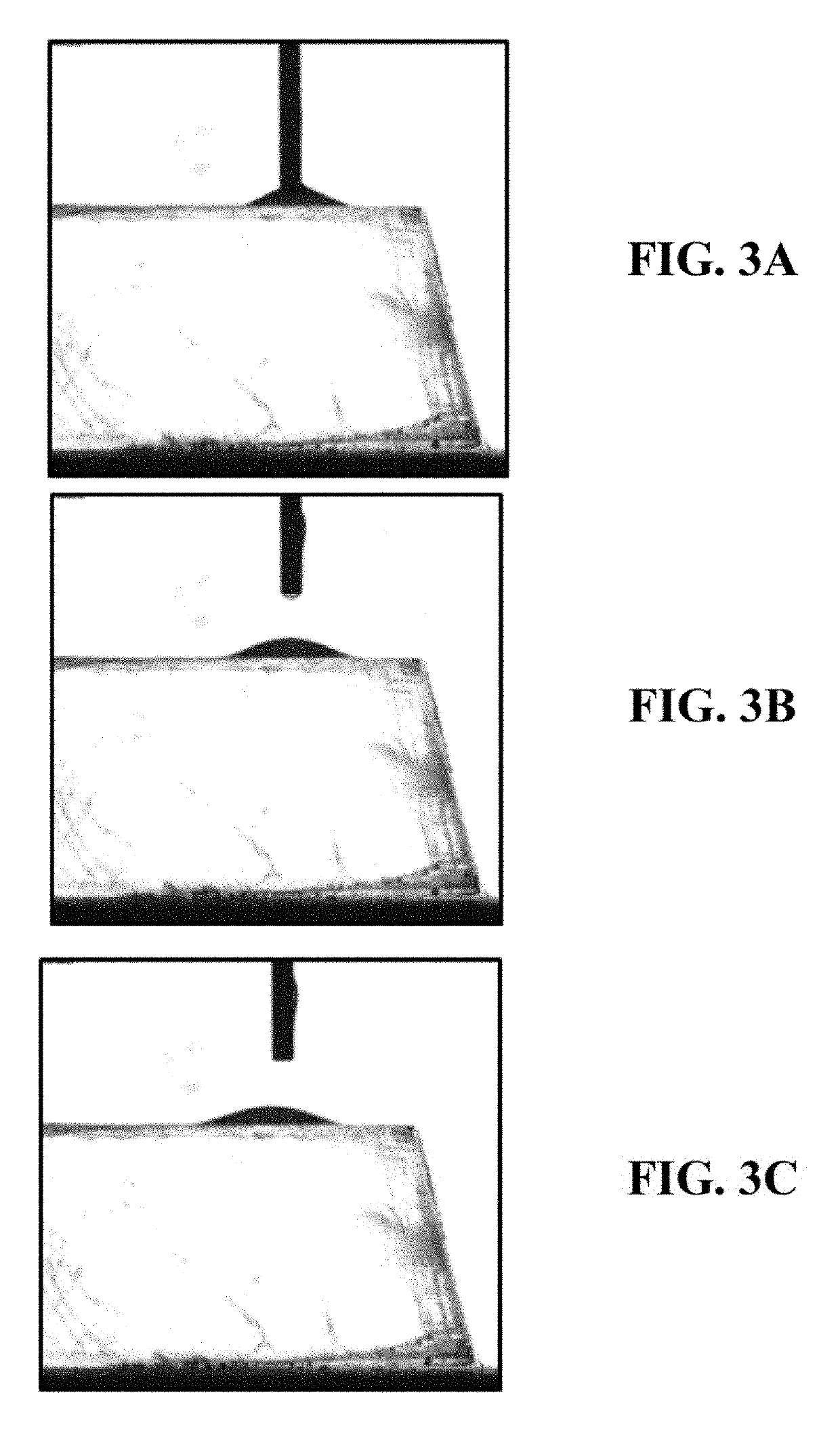Engineering formation wettability characteristics
- Summary
- Abstract
- Description
- Claims
- Application Information
AI Technical Summary
Benefits of technology
Problems solved by technology
Method used
Image
Examples
example 1
[0096]As shown in FIGS. 1A-1B, a droplet of an alkane (proxy for the hydrocarbon) is deposited on the surface of a carbonate mineral with an intervening brine layer. The intervening layer thickness is reduced with time as the droplet presses against the mineral surface. The forces that are involved are commonly known as the DLVO components (for Derjaguin, Landau, Verwey and Overbeek) for the electrostatic force that is a result of electrical charge on the interfaces—oil-brine and brine-rock. The measurement of the electric surface potential (zeta) can give information about the surface charge and its variation with respect to added components. The extent of the spread of the alkane is indicative of the wettability as is the contact angle. The contact angle of the oil drop through the brine phase is less than 90 degrees which is indicative of the water-wetting tendency.
example 2
[0097]As shown in FIGS. 2A-2C, a single drop of crude oil (with small quantities of acidic and basic compounds) is placed on a carbonate mineral. The spread in the droplet of the oil occurs spontaneously on the substrate, which suggests a favorable interaction between the surface and the oil droplet. However, once the oil droplet attaches itself to the substrate mineral surface, surfactants from the oil migrate and react with the surface. This cause the oil droplet to stay spread on the mineral surface. This indicates a preferentially oil-wet surface.
example 3
ample
[0098]As shown in FIGS. 3A-3C, an oil droplet (a sessile drop) absent of any additive (e.g., reducing agent) is placed on aged calcite substrate. The oil droplet is spreading on the substrate surface and completely wetting it. The droplet is only large enough so flotation does not occur.
PUM
 Login to View More
Login to View More Abstract
Description
Claims
Application Information
 Login to View More
Login to View More - R&D
- Intellectual Property
- Life Sciences
- Materials
- Tech Scout
- Unparalleled Data Quality
- Higher Quality Content
- 60% Fewer Hallucinations
Browse by: Latest US Patents, China's latest patents, Technical Efficacy Thesaurus, Application Domain, Technology Topic, Popular Technical Reports.
© 2025 PatSnap. All rights reserved.Legal|Privacy policy|Modern Slavery Act Transparency Statement|Sitemap|About US| Contact US: help@patsnap.com



